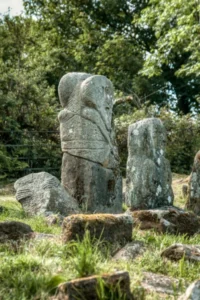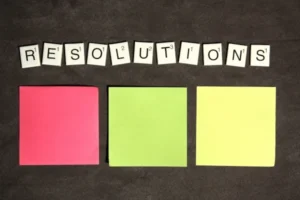The History of New Year’s Resolutions:
Each year as the calendar turns from December to January, people around the world take time to celebrate the beginning of a new chapter and the promise of a fresh start. One of the oldest traditions of welcoming the new year is the practice of making resolutions – goals and promises that we hope will make our lives better in the days ahead.
The history of this tradition flows through cultural practices and beliefs from a variety of civilizations and time periods, as diverse groups of people shared the same desire to mark the passage of time and encourage themselves toward personal growth.
New Year in Ancient Babylon
Some of the earliest New Year’s resolution makers in recorded history were the ancient Babylonians, who lived over 4,000 years ago. In Babylon, the New Year was welcomed at the beginning of spring with a 12-day religious festival known as Akitu.
During this time people made promises to the gods in the hope of receiving blessings in the coming year. Popular resolutions at the time included promising to repay borrowed money or to return farm equipment to its owner.
New Year with the Romans

Photo by Andreas Brunn
Around 2,000 years later, the tradition evolved within the Roman Empire. The Romans adopted Babylonian New Year’s customs and transferred them to the month of January, which takes its name from Janus, the Roman god of doors and gates (You can thank Julius Caesar for this change).
Janus was depicted with two faces – one looking back at the past and the other forward to the future – which helped inspire people to think back on their past actions and to make fresh promises going forward. Romans would exchange gifts and offer sacrifices to Janus, seeking his guidance for the year ahead.
New Year in the Middle Ages
Following the Roman era, the concept of New Year’s resolutions was incorporated into Christan tradition and practice. This January tradition follows closely the Christian season of Advent – a yearly time of reflection and preparation leading up to the Christmas holiday, which is celebrated on December 25. The Christian ideals of repentance and renewal aligned well with earlier Roman customs, which helped introduce the tradition of New Year’s resolutions into modern times.
New Year in Modern Times
These days, making resolutions has become a worldwide tradition that goes beyond cultural and religious boundaries. People from all sorts of backgrounds take the opportunity to set goals and make positive changes in their lives as they welcome the new year. Photo by Breakingpic
Common resolutions often revolve around health, fitness, personal finance, and relationships. However, according to research, while nearly 45% of Americans say they make New Year’s resolutions, only around 8% say they are successful in reaching their goals.
Although the specific resolutions and overall success rate may vary, the underlying spirit of self-improvement remains constant. Even people who choose not to make New Year’s resolutions likely take some time at the start of the year to think about their lives and future wishes.
The practice of making New Year’s resolutions demonstrates the timeless human desire for growth, renewal, and movement toward a better future. As we continue to welcome each new year, the ancient history of this tradition reminds us of the importance of looking back and the potential for growth in the days and months ahead.
Thanks for reading this history of making New Year’s resolutions!
You might also enjoy my article about 4 Steps you can take to have Confident Conversations in English
Also, be sure to see my article about ways to make new friends in the U.S.
Note: As an Amazon Associate, I earn from qualifying purchases, at no additional cost to you. Recommended resources are carefully selected and help support the operation of my blog, so thank you for clicking!


